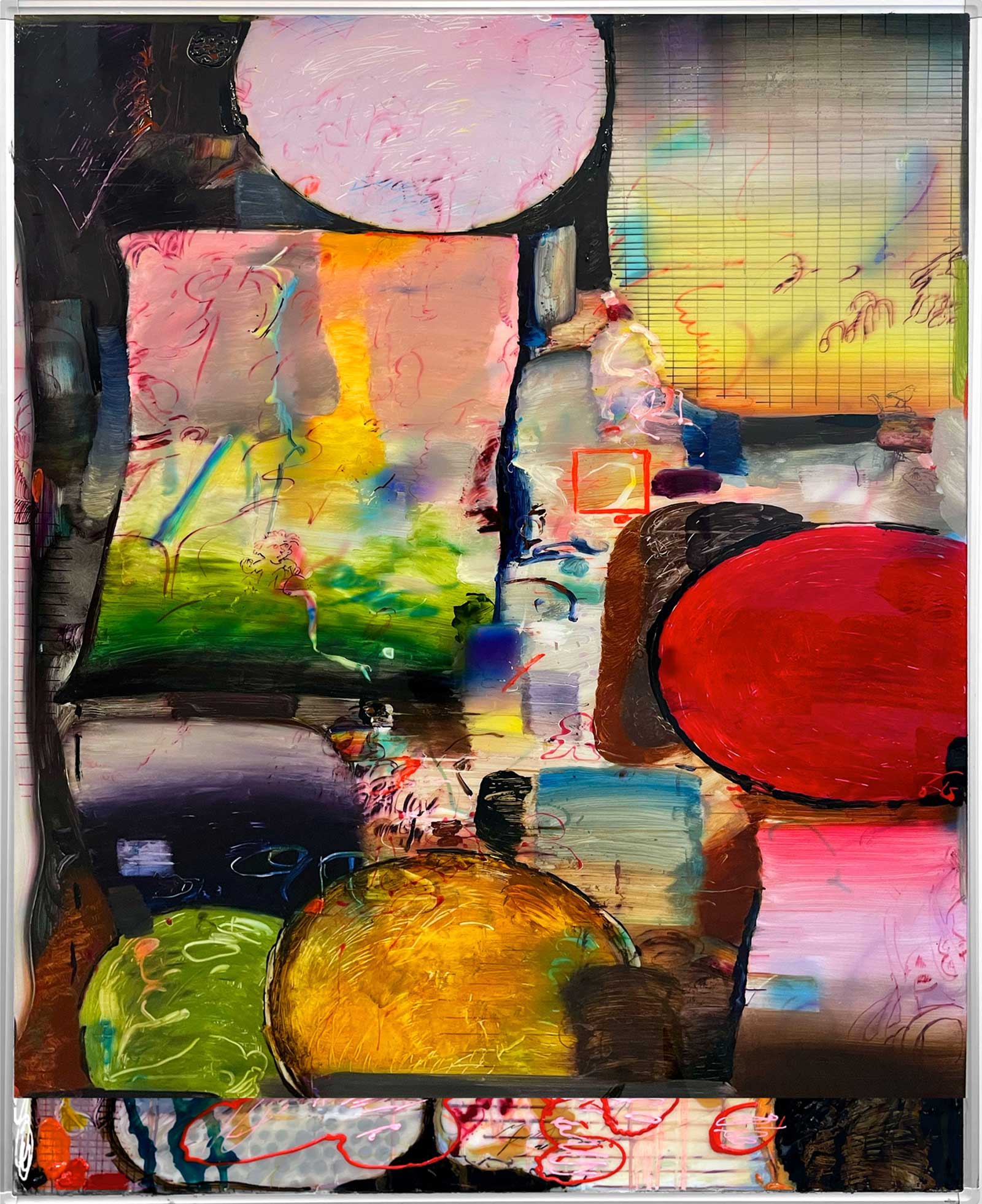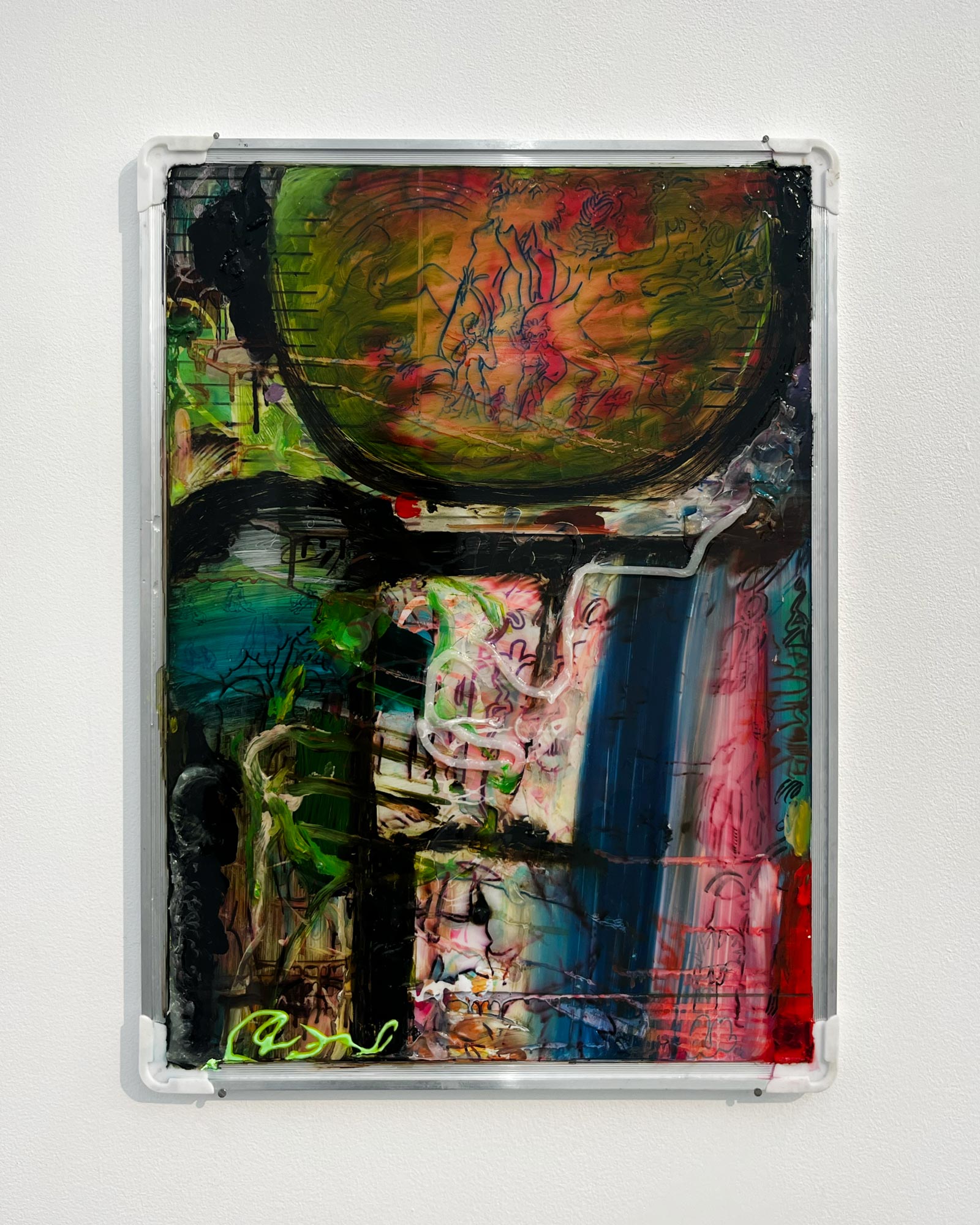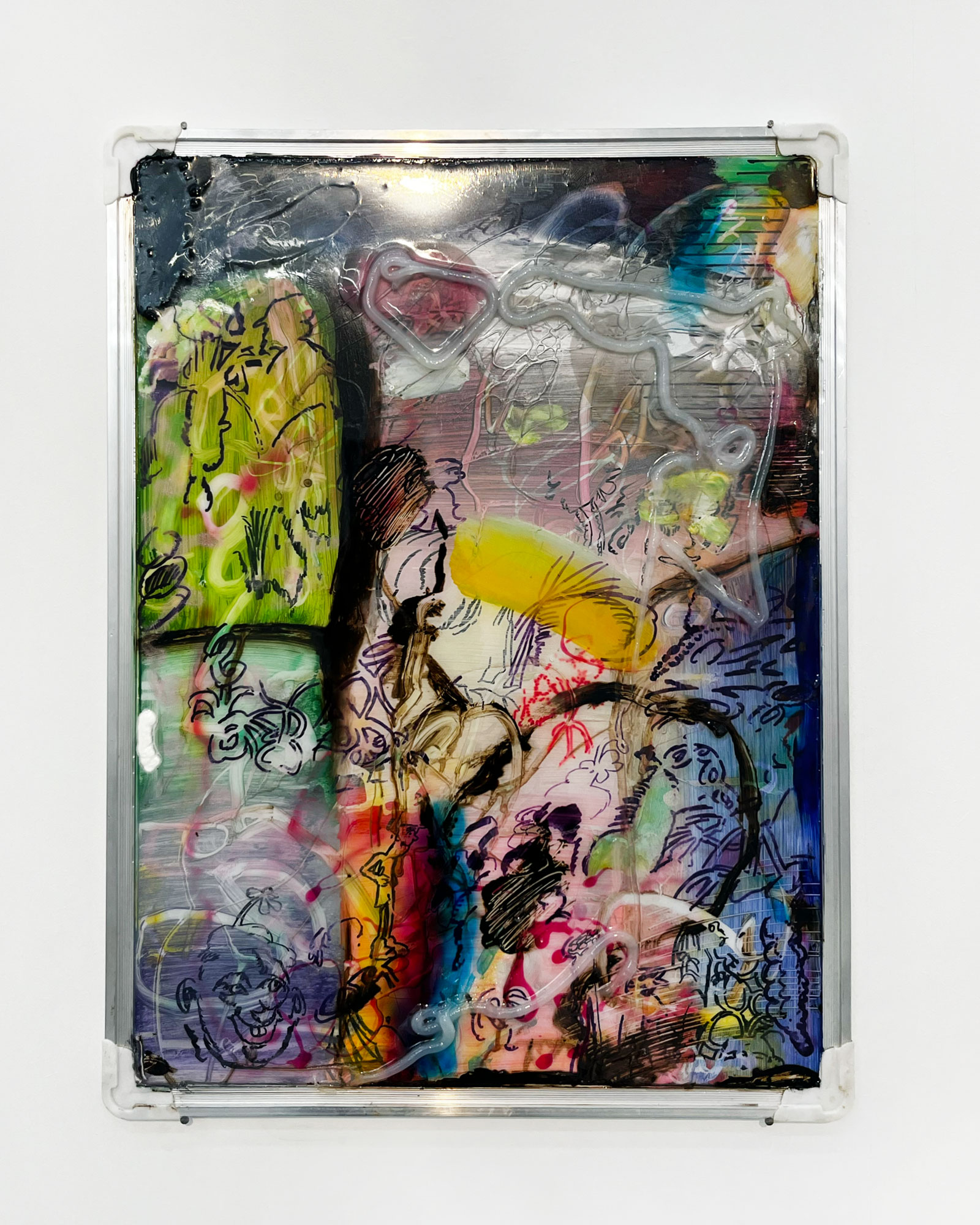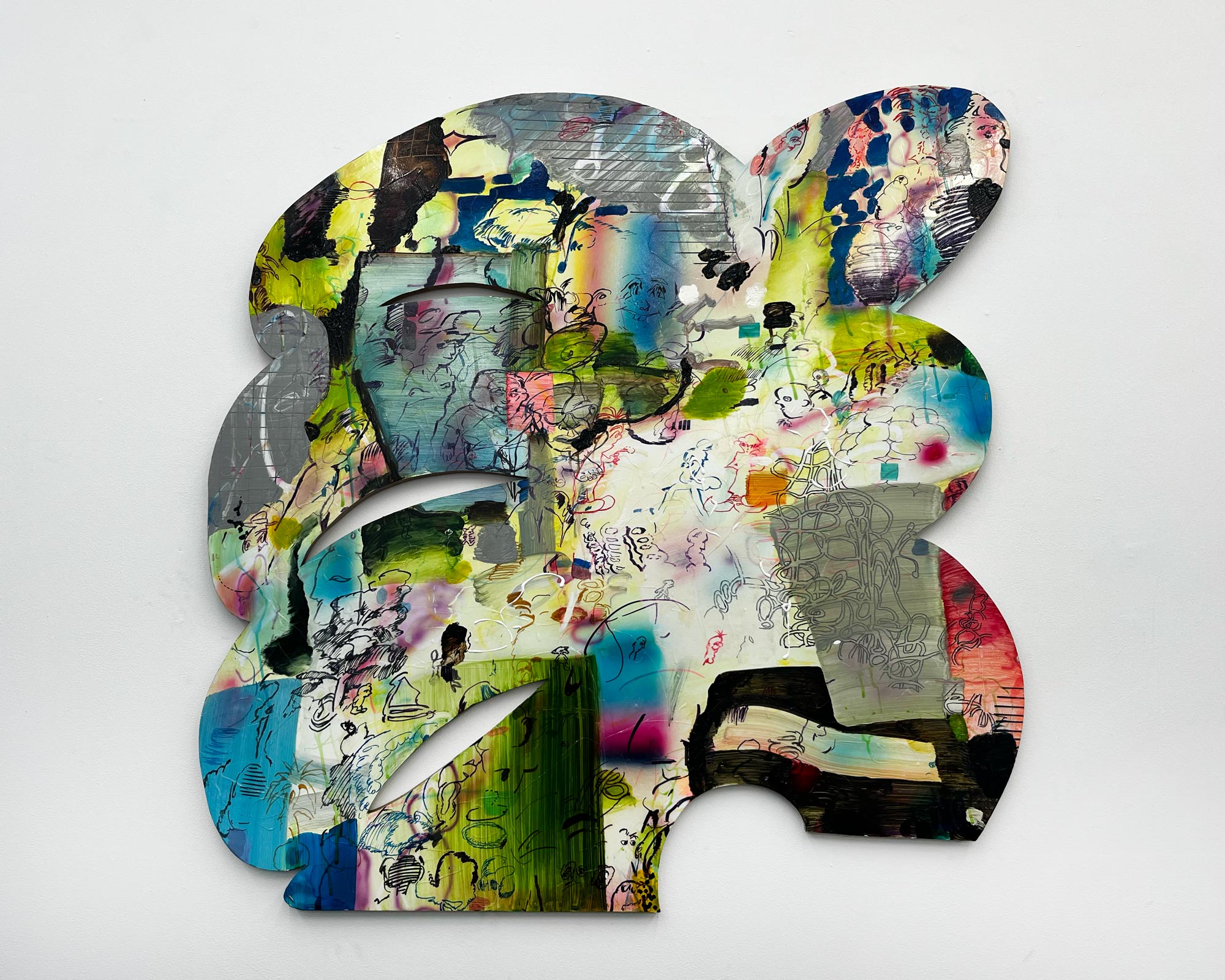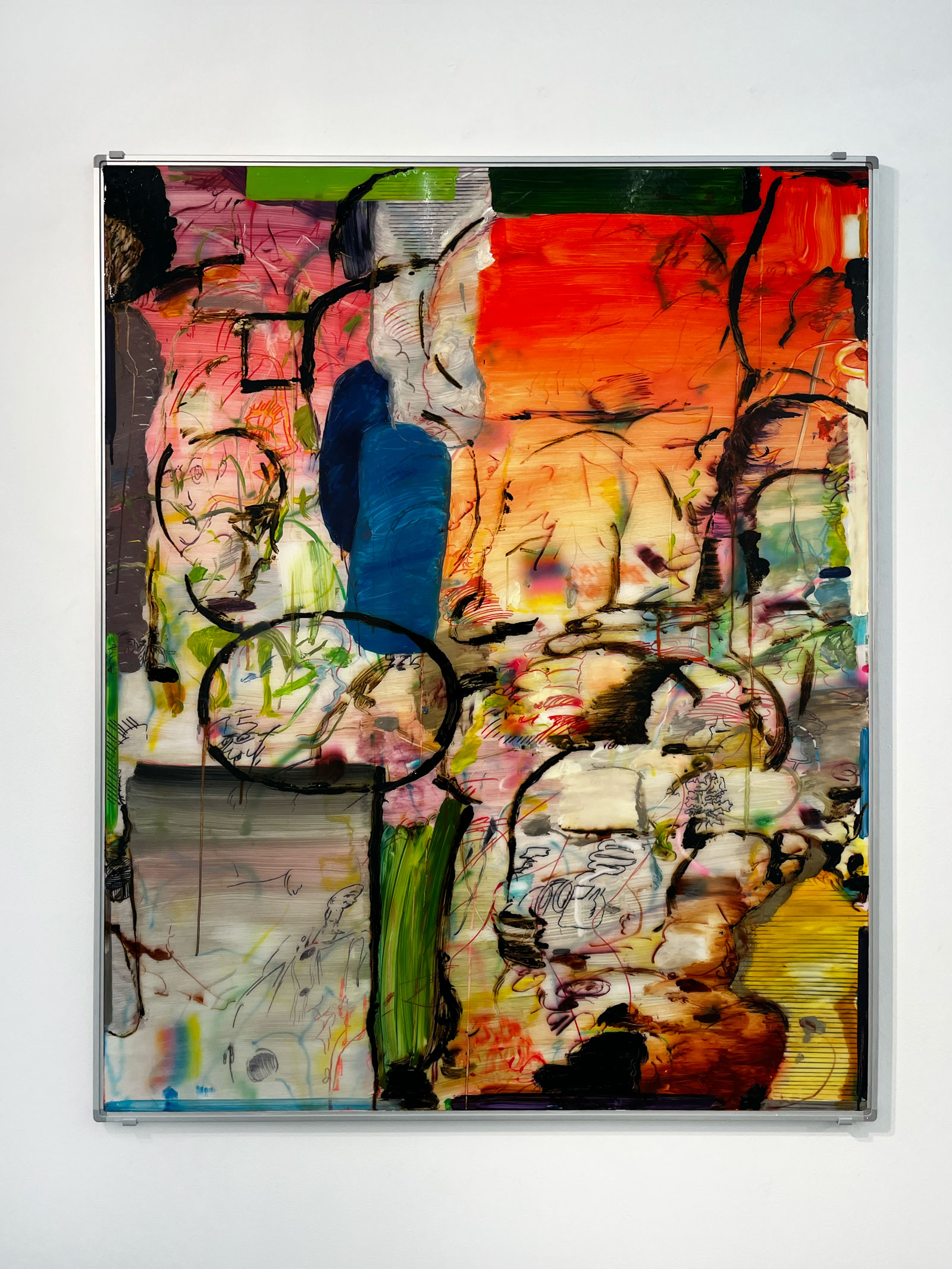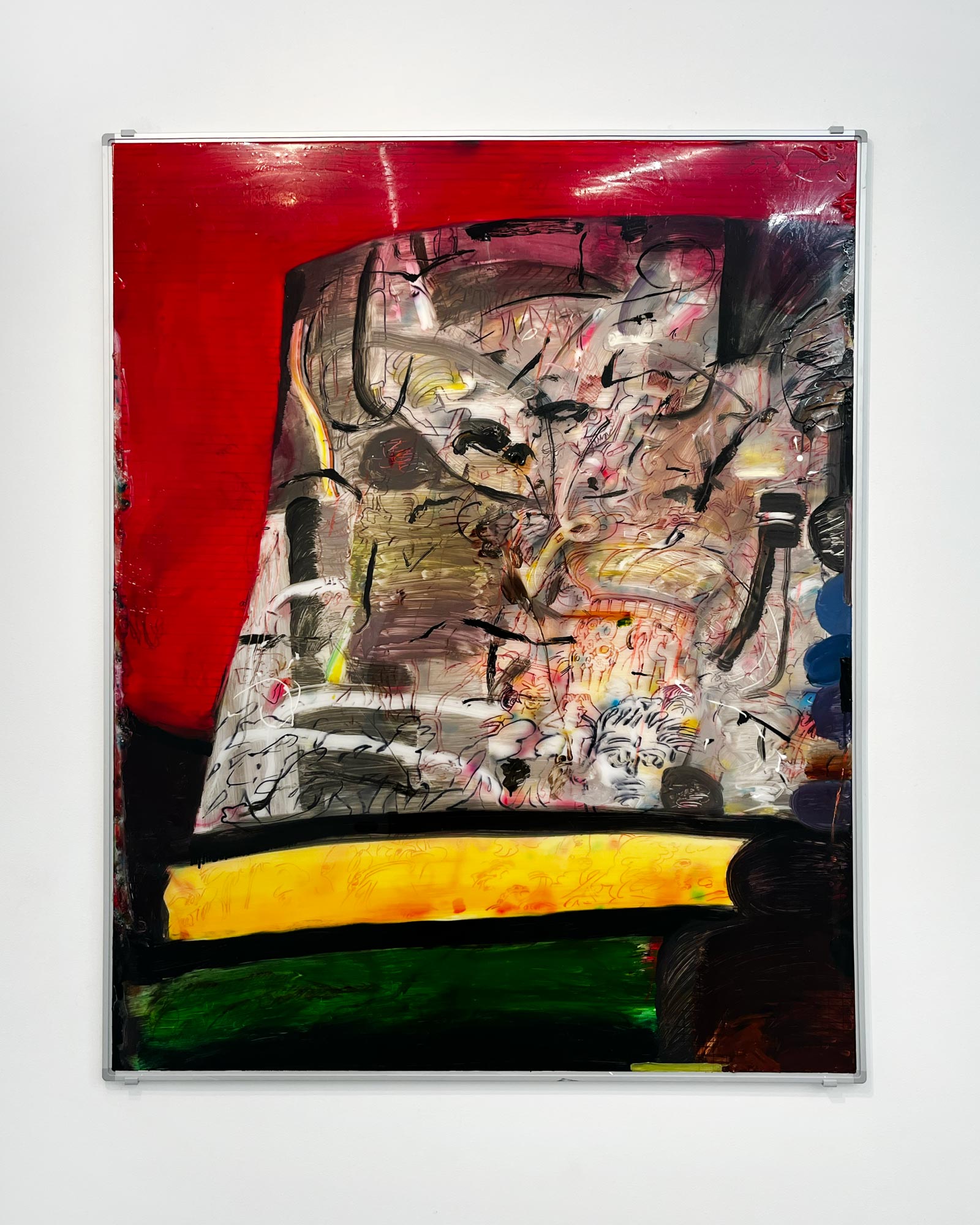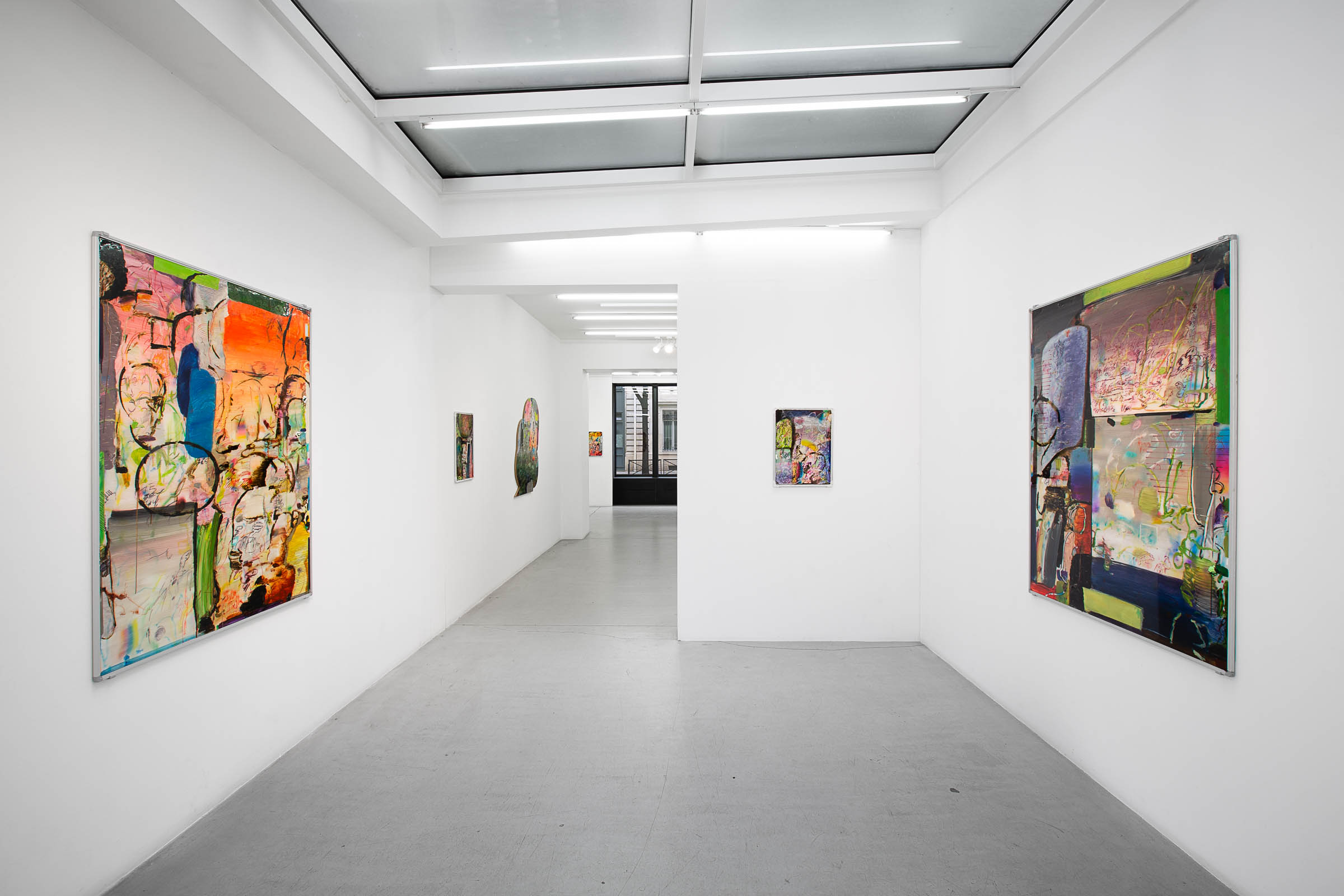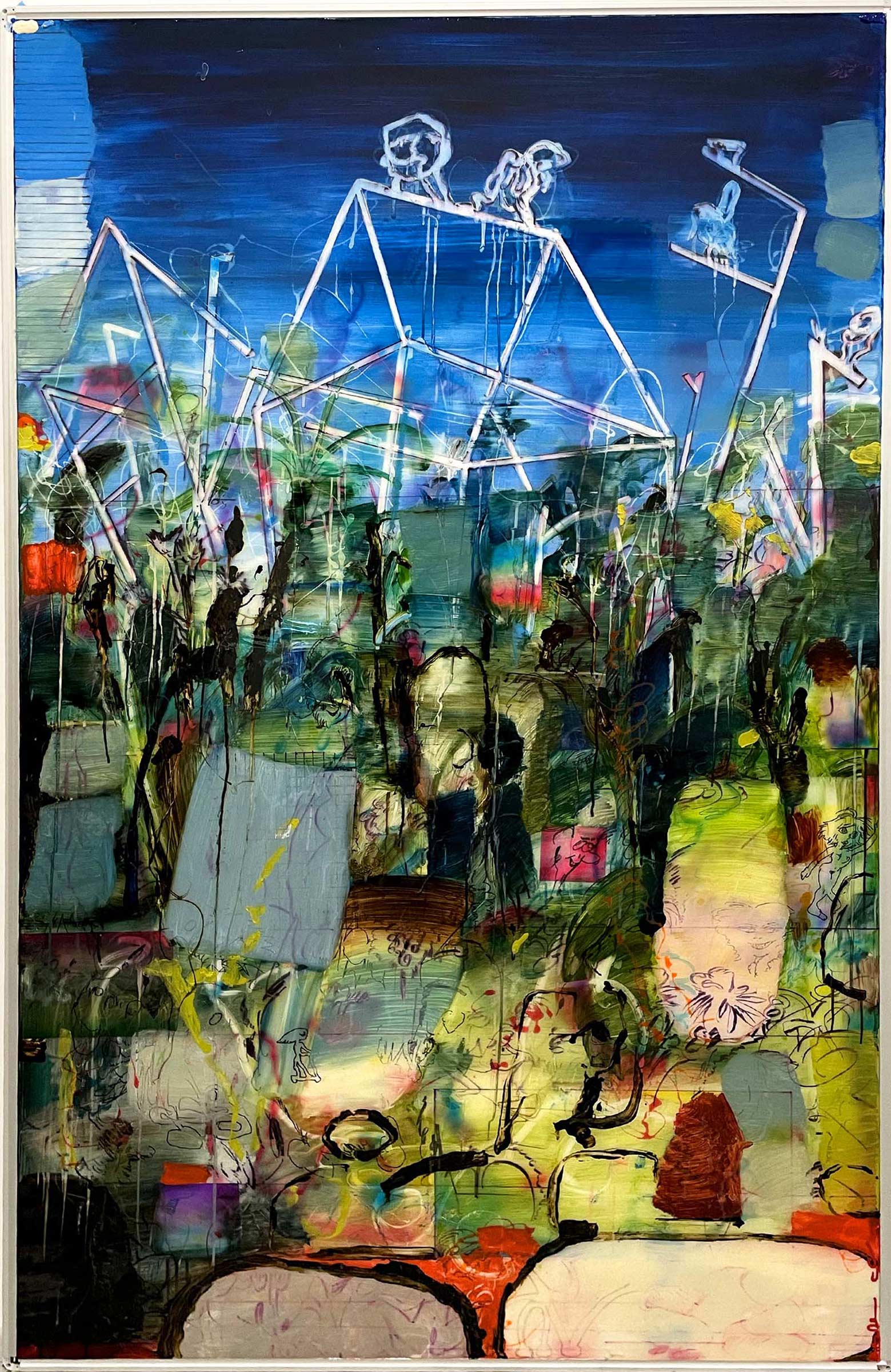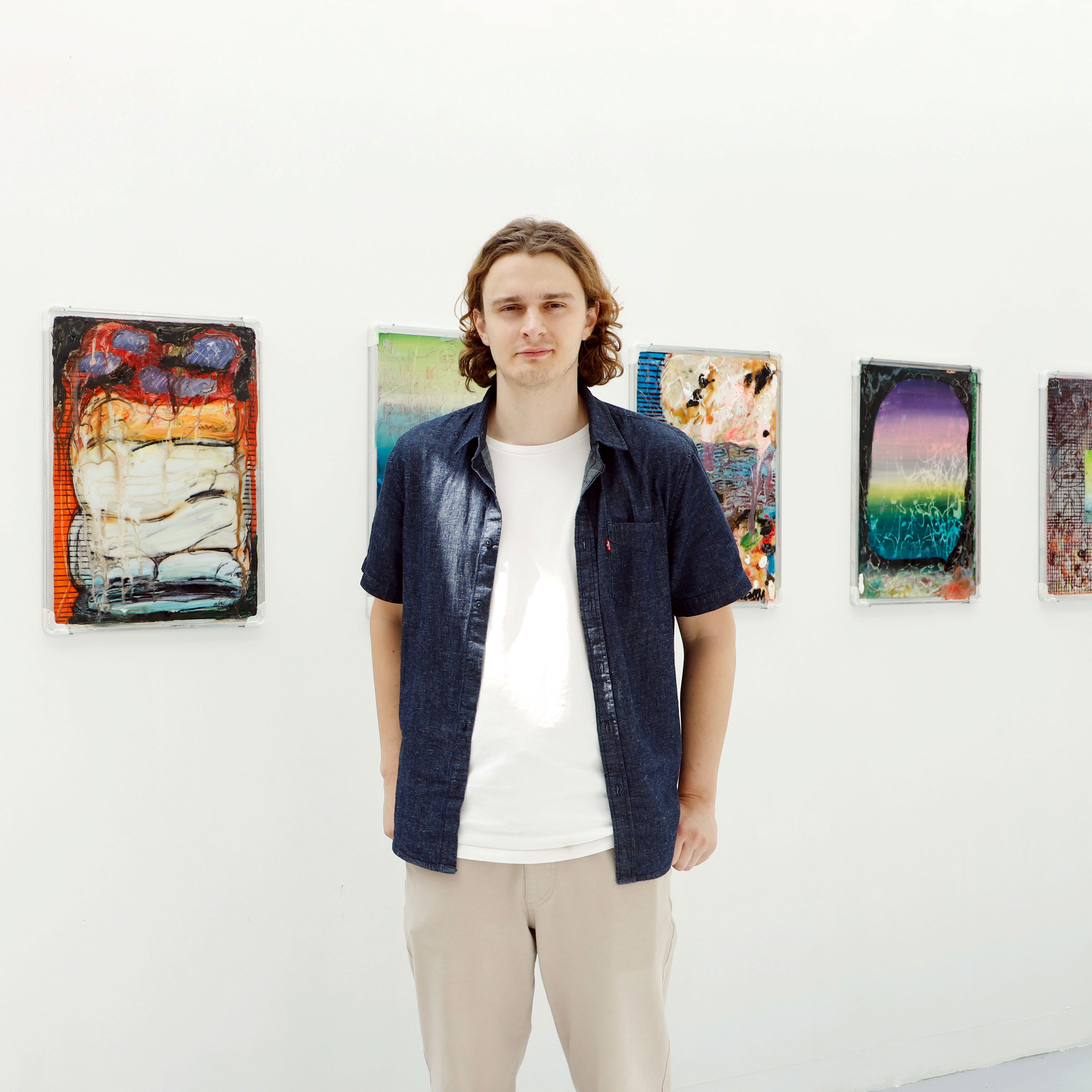The Big Slurp Theory suggests that anywhere and anytime in the universe, a bubble of vacuum could appear, expand at the speed of light, and engulf everything in its path.
PARIS-B is delighted to welcome Louis Lanne for his first solo show at the gallery, entitled “Big Slurp”.
This hypothesis served as the guiding thread for Louis Lanne in his first solo exhibition. It reflects a desire to represent various worlds at the moment of their disappearance.
“We could imagine ourselves in a scenario, one of those where the Higgs field permeates the entire Universe. The boson might believe itself stable, positioned either on a hilltop or perhaps on the rim, in the slight dip of a Mexican hat. But it might not be; that balance could be disturbed. And if, like a small ball, it were to be nudged? What if the vacuum were “false,” the universe seemingly functioning as usual, but actually existing in a temporary state that could, at any moment, collapse into a truer, more stable vacuum? If… if it turned out that the theory of vacuum decay, disintegration, the great collapse-consumption, quantum tunneling, metastability—a sphere of pure destructive energy at the speed of light… were more than probable? Without us even realizing it, we might be in freefall into the BIG SLURP.”
Previous
Next
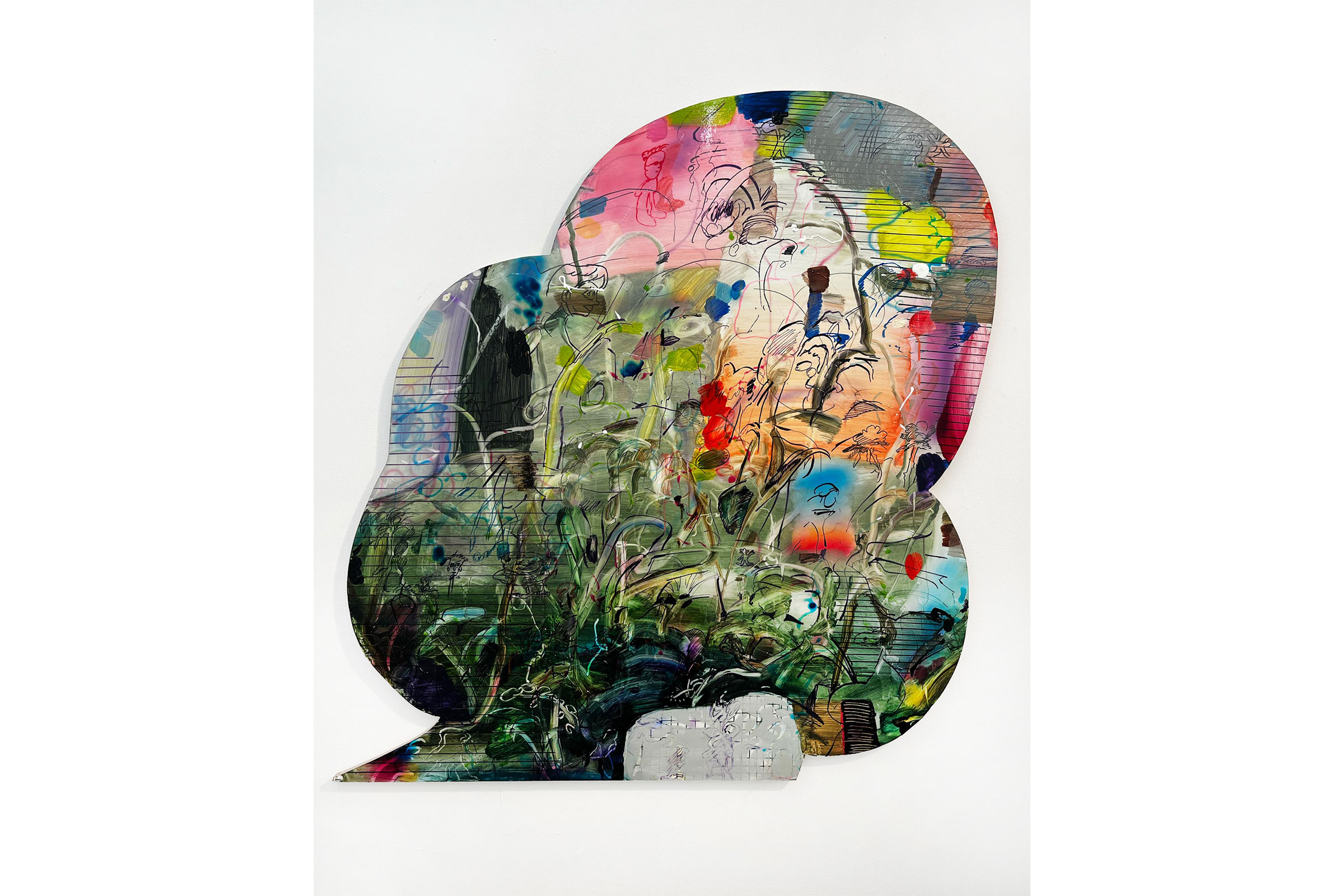
Here, he presents his latest paintings on Velleda boards, which are called that by antonomasia. They are, generically, whiteboards—empty?
“In his painting, there’s drawing: it resurfaces materially, as xylene and toluene dissolve into turpentine. Figures, forms, grids, and proto-writings permeate and pass through successive layers of matter, the canvas separating into phases. In the paintings of Pieter Bruegel the Elder, infrared analysis has revealed underlying chalk drawings, invisible to the naked eye beneath layers of oil and varnish. Here, they re-emerge and infuse the surface, replacing the master’s atmospheric perspective with a more oozing dissolution.”
“Traditionally used in educational settings to convey knowledge and facilitate learning, these boards have the advantage of being erasable, provided the information inscribed—generally clear and didactic—is applied with a compatible marker. Oil paint, wood glue, permanent marker, fluorescent marker, tar—all under a thick layer of resin. Out of this quadrangular, school-associated surface, with its daunting rigidity and austere materials, Louis Lanne creates a cosmic soup. Within this “frame” that is as constraining as it is reassuring, he grants himself the cheeky, childlike pleasure of scribbling abstract shapes and cartoonish figures, layering various materials, erasing, and letting it all slide… He then fixes in resin what should, by nature, remain ephemeral and erasable.”
We might also place ourselves between the end of Abstract Expressionism and Minimalism, except that here, figuration remains, though at its limits, almost dissolved. Occupying a space of tension between the ephemeral and the fixed, the rule and the play, Louis Lanne presents a series of rounded canvases, the very shapes that feature in his compositions. Free forms that contain his delirious scenes, where the inside is the outside—the shaped canvases of Frank Stella seem to have taken psychotropics. Like Dave Bowman in 2001: A Space Odyssey, we might then be drawn into a kind of colorful tunnel, terrified, racing at great speed through space, encountering strange cosmic phenomena and alien landscapes in astonishing colors. And then suddenly, we’d find ourselves not in Stanley Kubrick’s film, but back at 62 Rue de Turbigo.
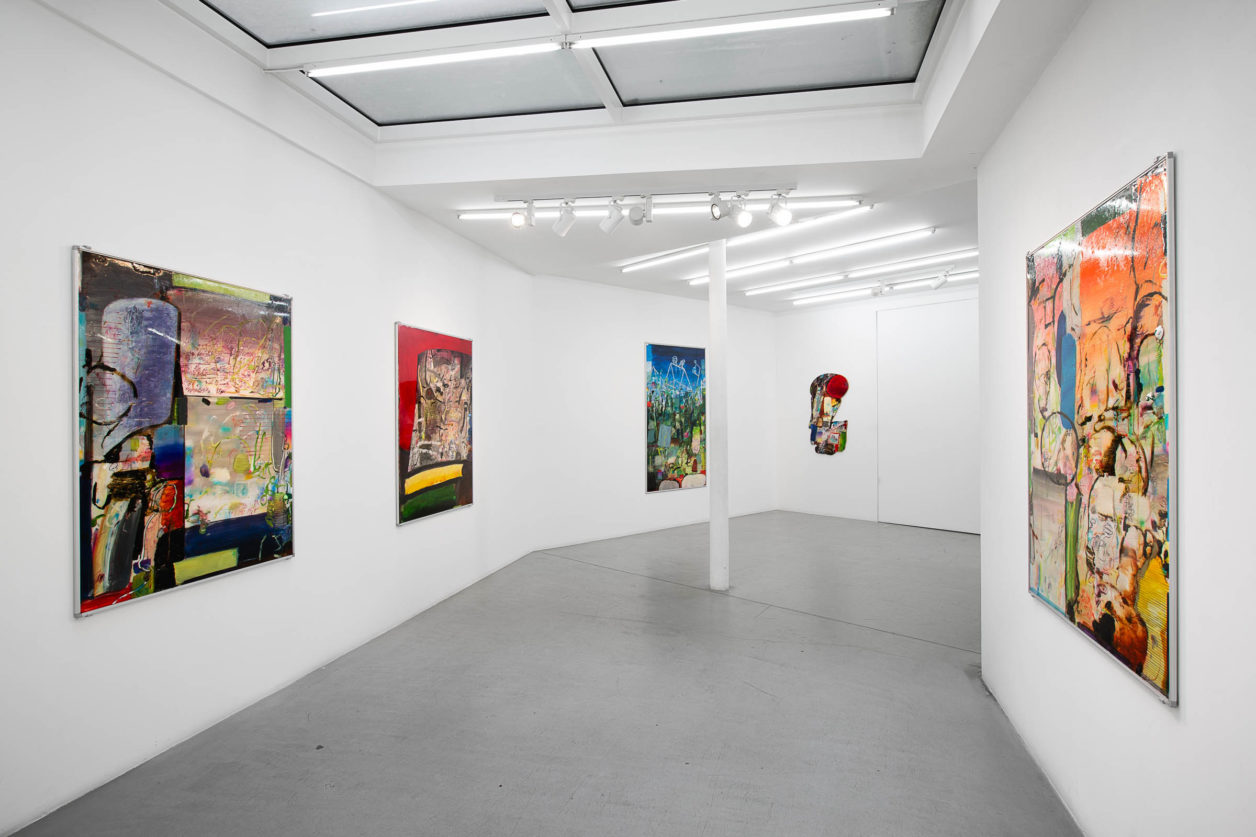
Here, the painting is a window onto a just-before-void—a false vacuum, a baroque liminality, a sum of everything that has or could exist. It isn’t made of dark matter, nor does it have the “color of the abyss” Bachelard describes in The Earth and the Reveries of Rest, but rather the color of infinity. It’s also possible that all structures could be destroyed instantaneously, without any warning.
— “Big Slurp” by Carin Klonowski
Louis Lanne lives and works in Paris, is an artist-in-residence at Poush Manifesto. He graduated from the École Estienne and the École Nationale Supérieure des Beaux-Arts de Paris with honors. In 2025, he will be part of the official selection for the 68th Salon de Montrouge.
